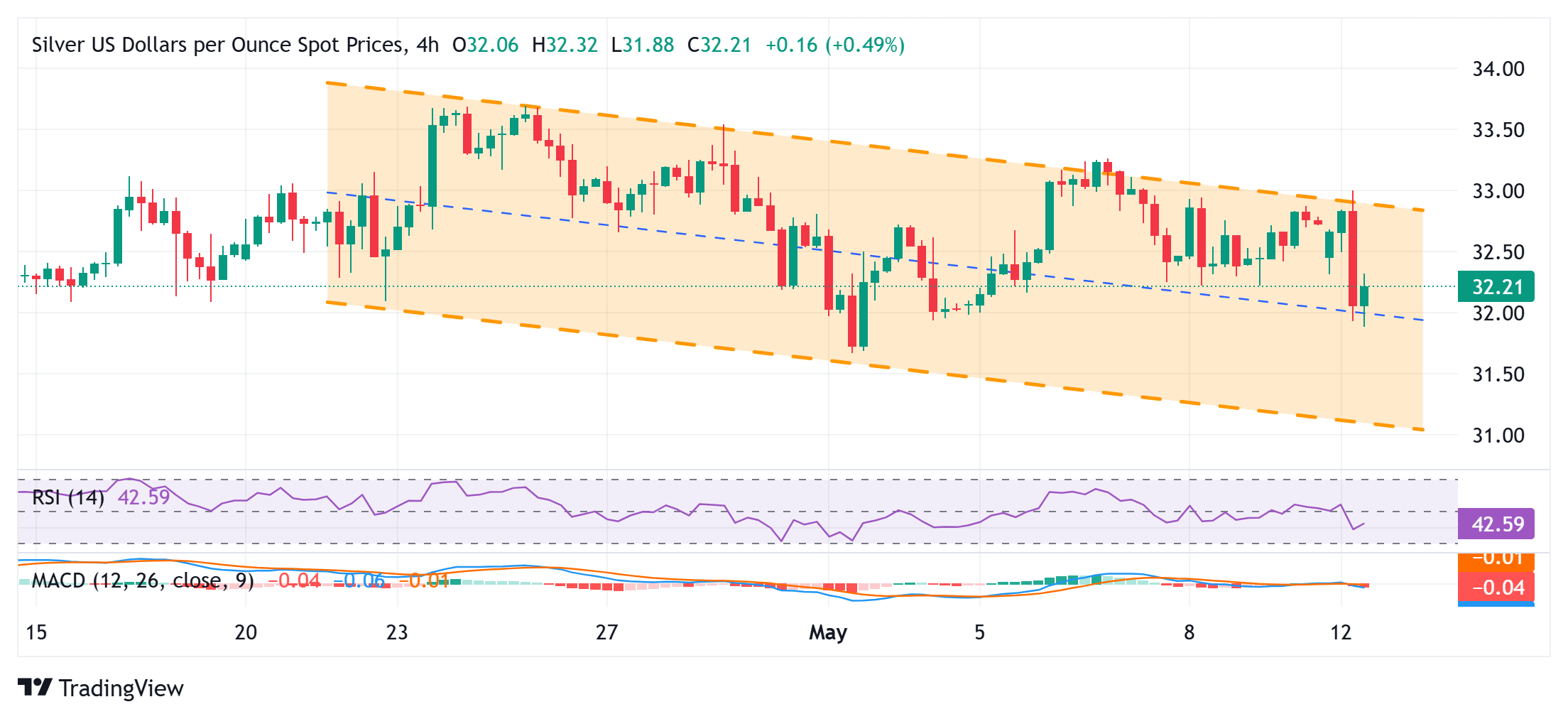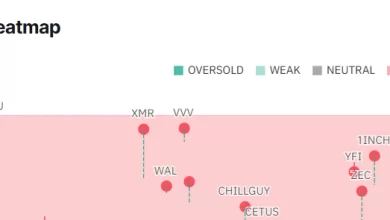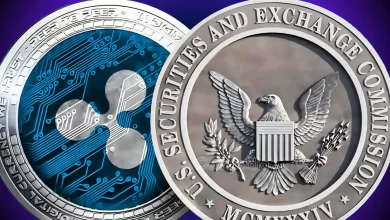XAG/USD faces rejection near descending channel hurdle, around $33.00

- Silver dives to over one-week low on Monday amid the optimism over the US-China trade deal.
- The mixed technical setup warrants caution for bears and before positioning for further losses.
- A sustained strength beyond the $33.00 mark will set the stage for additional near-term gains.
Silver (XAG/USD) attracts heavy intraday selling in the vicinity of the $33.00 round figure and dives to over a one-week trough during the first half of the European session on Monday. The white metal, however, shows some resilience below the $32.00 mark and currently trades around the $32.25 region, still down over 1.25% for the day.
From a technical perspective, the XAG/USD once again faced rejection near a resistance marked by the top boundary of a short-term descending channel. Moreover, oscillators on daily/hourly charts have started gaining negative traction and support prospects for a further depreciating move. However, the said channel constitutes the formation of a bullish flag pattern against the backdrop of the recent goodish recovery from the $28.45 area, or the year-to-date trough touched in April.
The aforementioned mixed setup warrants some caution for bearish traders and suggests that any subsequent fall is more likely to attract some dip-buyers near the $31.70 region, or the monthly low. This, in turn, should help limit the downside near the descending channel support, currently pegged just ahead of the $31.00 mark. A convincing break below the latter, however, will be seen as a fresh trigger for bearish traders and pave the way for some meaningful downfall in the near term.
On the flip side, the $32.65 area now seems to act as an immediate barrier ahead of the $33.00 mark, or the descending channel hurdle. A sustained strength beyond will confirm a fresh breakout and allow the XAG/USD to accelerate the move higher towards the $33.70 intermediate hurdle before aiming to reclaim the $34.00 mark.
Silver 4-hour chart

Silver FAQs
Silver is a precious metal highly traded among investors. It has been historically used as a store of value and a medium of exchange. Although less popular than Gold, traders may turn to Silver to diversify their investment portfolio, for its intrinsic value or as a potential hedge during high-inflation periods. Investors can buy physical Silver, in coins or in bars, or trade it through vehicles such as Exchange Traded Funds, which track its price on international markets.
Silver prices can move due to a wide range of factors. Geopolitical instability or fears of a deep recession can make Silver price escalate due to its safe-haven status, although to a lesser extent than Gold’s. As a yieldless asset, Silver tends to rise with lower interest rates. Its moves also depend on how the US Dollar (USD) behaves as the asset is priced in dollars (XAG/USD). A strong Dollar tends to keep the price of Silver at bay, whereas a weaker Dollar is likely to propel prices up. Other factors such as investment demand, mining supply – Silver is much more abundant than Gold – and recycling rates can also affect prices.
Silver is widely used in industry, particularly in sectors such as electronics or solar energy, as it has one of the highest electric conductivity of all metals – more than Copper and Gold. A surge in demand can increase prices, while a decline tends to lower them. Dynamics in the US, Chinese and Indian economies can also contribute to price swings: for the US and particularly China, their big industrial sectors use Silver in various processes; in India, consumers’ demand for the precious metal for jewellery also plays a key role in setting prices.
Silver prices tend to follow Gold’s moves. When Gold prices rise, Silver typically follows suit, as their status as safe-haven assets is similar. The Gold/Silver ratio, which shows the number of ounces of Silver needed to equal the value of one ounce of Gold, may help to determine the relative valuation between both metals. Some investors may consider a high ratio as an indicator that Silver is undervalued, or Gold is overvalued. On the contrary, a low ratio might suggest that Gold is undervalued relative to Silver.




